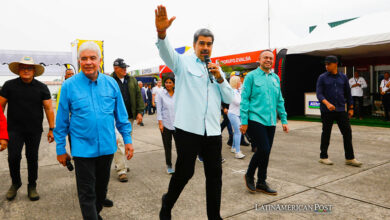South America moves away from political extremes
The election results in Brazil (2020), Uruguay and Colombia (2019) show a rejection of the right and left parties .

Several of the changes in the politics of South American countries have been accompanied by great social discontent and massive demonstrations. / Photo: Pixabay
LatinAmerican Post | Santiago Goméz Hernández
Escucha este artículo
Leer en español: Sudamérica se aleja de los extremos políticos
The two most populous countries in South America have a large number of moderate local governments in the regions. Added to the election of Luis Alberto Lacalle Pou in Uruguay, cutting off the hegemony of the Frente Amplio, it is a sign of a possible shift to the center of the political spectrum on the continent.
The recent local elections in Brazil are an alert in the South American political landscape. Neither the candidates of President Jair Bolsonaro, nor the mythical Workers Party of former President Lula Da Silva were the top winners of the local elections.
Likewise, last year, President Iván Duque and his party, Centro Democrático, suffered major defeats in local elections. No politician related to the National Government was elected in the main cities. The triumph of Claudia López (Left Center policy) in Bogotá and Daniel Quintero (alternative supported by the left) in Medellín stands out.
Added to this is the election last year (assuming in 2020) of Lacalle Pou as Uruguayan president. The son of former president Luis Alberto Lacalle Herrera defeated the Pepe Mujica party in the second round, breaking a hegemony of 3 consecutive governments.
Similarly, after the political crisis that Peru is experiencing after the removal of Martín Vizcarra, only the appointment of Francisco Sagasti, a moderate politician, was able to calm the discomfort of the population. Both Vizcarra and Sagasti are considered center.
To this series of moderate victories in the South of the Americas, we can add the great victory of Joe Biden in the United States. The former Democratic vice president represents the most moderate wing of the party and shows that despite the great support that Donald Trump continues to have, the center was able to compete and win in a tight election.
Social tension
Several of these changes have been accompanied by great social discontent and massive demonstrations. From the protests for police violence in the United States and Colombia; to the ones in Chile and Peru that have managed to change the constitution and overthrow a president (respectively).
The main rival: the left
Despite losing ground in recent years, the traditional Latin American left has relied on its great leaders and they are willing to stay. Figures like Evo Morales and Cristina Fernández de Krichner were vital to the presidential victories in Argentina and Boliva in recent years.
This includes the victory of the MAS in Andean territory, after the coup that the first indigenous president of the region suffered. Luís Arce recovered Morales's political flags, despite the fact that Morales does not appear in the near panorama, and will have to send tranquility to the region after the recent political instability.
Also read: What happened to Evo Morales in Bolivia after the elections?
Likewise, there are old acquaintances such as Gustavo Petro, who starts now as one of the favorites to contest the Colombian presidency in 2022. The return of former Ecuadorian president Rafael Correa, who will bet on Andrés Arauz in next year's elections, also stands out. Correa even tried to run as the vice-presidential formula of his former minister, but the courts ratified the sentence he has for bribery.




